DEPARTMENT OF
ENTOMOLOGY

Current Research Interests
My lab focuses on arthropods that effect the health and wellbeing of the public. Most of the emphasis of my research has been on mosquitoes (especially peridomestic container inhabiting Aedes), and honey bees. My prior research experience has focused on the biology and control of Asian tiger mosquitoes (Aedes albopictus). Our recent grant projects include examining the effects of mosquito adulticides on the health and mortality of honey bees, and examining the use of biomarkers as predictors to honey bee health outcomes. We are collaborating with mosquito control districts, area beekeepers, the USDA bee lab in Baton Rouge, and other laboratories to assess the impacts of pesticides on bees. We are excited to being working on the project, and are always looking for new students to assist with our projects.
My future interests in mosquitoes include both applied and basic research. Our lab plans on working closely with the local mosquito control programs throughout the state on both applied and basic research projects. In Louisiana, Culex quinquefasciatus is an important vector of West Nile virus. The unique public wastewater systems in Louisiana provide ample habitat for this species. In addition, Louisiana has populations of important peridomestic container inhabiting species, such as Aedes albopictus and Aedes aegypti. Our lab plans on examining the population dynamics of these species over time and space in Louisiana.
Our lab also values extension and outreach projects geared towards arthropods of medical importance. We recently recieved a grant to develop interactive educational tools. We have also developed, and continue to develop, cell phone applications as educational tools for the public.
You can read more below regarding more detailed information on my research interests.
ASIAN TIGER MOSQUITO BIOLOGY and CONTROL
The Asian tiger mosquito is both an important nuisance mosquito and vector of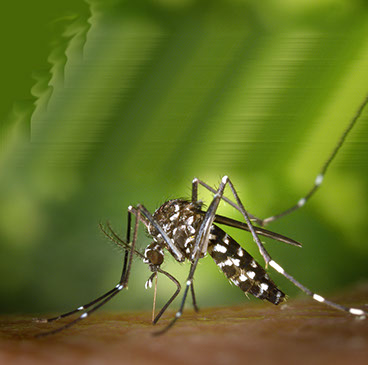 Photo by James Gathany, CDC disease causing pathogens. For my postdoctoral research, I was able to conduct research on the biology of Aedes albopictus in New Jersey. This work was part of a larger USDA funded area-wide management project for the Asian tiger mosquito. This project focused on different types of control methodologies, educational strategies, surveillance tools, predictive modeling, and understanding the biology of this species. My research continues to focus on this species, as well as other peridomestic container inhabiting species. Louisiana offers a wonderful opportunity to study these species, especially if interested in learning more about Aedes albopictus and Aedes aegypti.
Photo by James Gathany, CDC disease causing pathogens. For my postdoctoral research, I was able to conduct research on the biology of Aedes albopictus in New Jersey. This work was part of a larger USDA funded area-wide management project for the Asian tiger mosquito. This project focused on different types of control methodologies, educational strategies, surveillance tools, predictive modeling, and understanding the biology of this species. My research continues to focus on this species, as well as other peridomestic container inhabiting species. Louisiana offers a wonderful opportunity to study these species, especially if interested in learning more about Aedes albopictus and Aedes aegypti.
Bartlett-Healy, K., I. Unlu, P. Obenauer, T. Hughes, S. Healy, T. Crepeau, A. Farajollahi, B. Kesavaraju, D. Fonseca, G. Schoeler, R. Gaugler, and D. Strickman. 2012. Larval habitat utilization and community dynamics of Aedes albopictus and Aedes japonicus japonicus (Diptera: Culicidae) in urban, suburban, and rural areas. Journal of Medical Entomology. 49(4):813-824.
Halasa, Y. A., D. S. Shepard, D. M. Fonseca, A. Farajollahi, S. P. Healy, R. Gaugler, K. Bartlett-Healy, D. Strickman, and G. G. Clark. 2014. Quantifying the impact of mosquitoes on quality of life and enjoyment of yard and porch activities in New Jersey. PLoS ONE 9(3): e89221. Doi:10.1371.
Fonseca, D., Unlu, I., T. Crepeau, A. Farajollahi, S. P. Healy, K. Bartlett-Healy, D. Strickman, R. Gaugler, G. Hamilton, D. Kline, and G. G. Clark. 2013. Area-wide management of Aedes albopictus: I. Gauging the efficacy of traditional integrated pest control measures against urban container mosquitoes. Pest Management Science. doi:10.1002/ps.3511.
Unlu, I., A. Farajollahi, S. P. Healy, T. Crepeau, K. Bartlett-Healy, E. Williges, D. Strickman, G. G. Clark, R. Gaugler, and D. M. Fonseca. 2010. Area-wide management of Aedes albopictus: choice of study sites based on geospatial characteristics, socioeconomic factors, and mosquito populations. Pest Management Science. 67 (8): 965-974.
EFFECTS OF PESTICIDES ON HONEY BEES
Our recent grant projects include examining the effects of mosquito adulticides on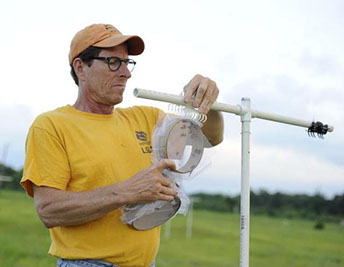 the health and mortality of honey bees, and examining the use of biomarkers as predictors to honey bee health outcomes. While obtaining my second Master's degree, in public health, I became extremely interested in pesticide's and their effects on the environment, human health, and the health of other animals (including insects). With the help of numerous collaborative partner's, our research objectives are to examine the effects of different pesticides on honey bee health and mortality. This includes numerous laboratory based studies to examine both acute and sublethal effects, semi-field studies to examine the effects of different pesticides in the field, and field based studies to look at long term exposure to different types of pesticides. We are continually developing new projects in this area of study. I am currently advising several postdoctoral researchers and students in this area of study through EPA and USDA grant funded projects. We are also collaborating on research projects with the USDA honey bee breeding and genetics laboratory in Baton Rouge. Louisiana State University is an ideal location to study this type of research, due to the close proximity of our highly qualified collaborative partners on these projects, and the close ties with the local beekeeping community.
the health and mortality of honey bees, and examining the use of biomarkers as predictors to honey bee health outcomes. While obtaining my second Master's degree, in public health, I became extremely interested in pesticide's and their effects on the environment, human health, and the health of other animals (including insects). With the help of numerous collaborative partner's, our research objectives are to examine the effects of different pesticides on honey bee health and mortality. This includes numerous laboratory based studies to examine both acute and sublethal effects, semi-field studies to examine the effects of different pesticides in the field, and field based studies to look at long term exposure to different types of pesticides. We are continually developing new projects in this area of study. I am currently advising several postdoctoral researchers and students in this area of study through EPA and USDA grant funded projects. We are also collaborating on research projects with the USDA honey bee breeding and genetics laboratory in Baton Rouge. Louisiana State University is an ideal location to study this type of research, due to the close proximity of our highly qualified collaborative partners on these projects, and the close ties with the local beekeeping community.
Rinkevich, F., Joseph W. Margotta, Vivek Pohkrel, Todd W. Walker, Randy H. Vaeth, Wesley C. Hoffman, Bradley K. Fritz, Robert G. Danka, Thomas E. Rinderer, Robert L. Aldridge, Kenneth J. Linthicum, James A. Ottea and Kristen B. Healy. Assessing the impacts of truck based ultra-low volume applications of mosquito adulticides on honey bees (Apis mellifera). Submitted July 2016.
Rinkevich, F., J. Margotta, J. Pittman, J. Ottea, and K. Healy. 2016. Pteridine levels and head weights are correlated with age and colony task in the honey bee, Apis mellifera. PEERJ.
Rinkevich, F.,, J. Margotta, J. Pittman, B. Danka, M. Tarver, J. Ottea, and K. Healy. 2015. Genetics, Synergists, and Age Affect Insecticide Sensitivity of the Honey Bee, Apis mellifera. PLoS One. DOI: 10.1371/journal.pone.0139841
Bartlett-Healy, K., W. Siriwong, and M. Robson. Pesticides. Chapter 13. In Praeger Handbook of Environmental Health, Praeger Publishers, 2011.
Keithmaleesatti, S., Siriwong, W., Borjan, M., Bartlett-Healy, K., and Robson, M. Pesticide Residues in Aquatic invertebrates, Chapter 10 in Pesticides: Evaluation of Environmental Pollution. Nollet, L. and Rathore, H. Eds. CRC Press, 2011.
PUBLIC HEALTH EDUCATION
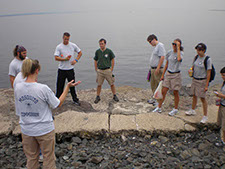 My experience includes over 15 years in medical entomology and public health. I have had the unique opportunity to develop, implement and evaluate public health education programs, especially geared towards mosquitoes and mosquito-borne diseases. As a postdoctoral researcher, I was involved in developing a program to teach the public source reduction of container habitats. Our focus was primarily the Asian tiger mosquito, which is both a nuisance pest and important vector of disease causing pathogens. We had several significant findings to our research, including the effectiveness of using community peer educators in public health education campaigns. After completing my post doc and second master's degree in public health, I had the opportunity to work as an epidemiologist for a health department in New Jersey. This allowed me a better perspective in public health, especially as it relates to vector-borne diseases. I continue to advise students and researchers in the area of public health education. Louisiana offers a wonderful opportunity to conduct research in this area, especially in collaboration with the local mosquito control districts.
My experience includes over 15 years in medical entomology and public health. I have had the unique opportunity to develop, implement and evaluate public health education programs, especially geared towards mosquitoes and mosquito-borne diseases. As a postdoctoral researcher, I was involved in developing a program to teach the public source reduction of container habitats. Our focus was primarily the Asian tiger mosquito, which is both a nuisance pest and important vector of disease causing pathogens. We had several significant findings to our research, including the effectiveness of using community peer educators in public health education campaigns. After completing my post doc and second master's degree in public health, I had the opportunity to work as an epidemiologist for a health department in New Jersey. This allowed me a better perspective in public health, especially as it relates to vector-borne diseases. I continue to advise students and researchers in the area of public health education. Louisiana offers a wonderful opportunity to conduct research in this area, especially in collaboration with the local mosquito control districts.
Healy, K., G. Hamilton, T Crepeau, S Healy, I Unlu, A Farajollahi, and D Fonseca. Evaluating community peer educators in promoting reduction of habitat for vectors of dengue, chikungunya, and Zika viruses. Submitted to PLoS One.
Bartlett-Healy, K., G. Hamilton, S. Healy, T. Crepeau, I. Unlu, A. Farajollahi, D. Fonseca, R. Gaugler, G. Clark, and D. Strickman. 2011. Source reduction behavior as an independent measurement of the impact of a public health education campaign in an integrated vector management program for the Asian tiger mosquito. International Journal of Environmental Research and Public Health. 8: 1358-1367.
TEMPORAL AND SPATIAL DYNAMICS AND PREDICTIVE MODELING
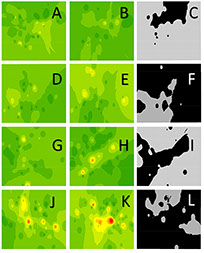 During my graduate schooling at Rutgers University, I became extremely interested in the use of temporal and spatial dynamics and predictive modeling in understanding mosquito biology and mosquito-borne diseases. I am often drawn to principals of physics and statistical models to better understand complex systems. This has enabled our lab to use predictable and measurable systems (such as evaporation rates, or thermal accumulation) to better understand habitat usage for different species of mosquitoes. We are currently looking at the use of degree day modeling to predict the early spring emergence of certain species of mosquitoes. This research involves collaboration with researchers from other states to better understand how geographic location effects the predictability of these systems. My research over the years has also used predictive modeling tools in understanding larval habitat usage over time and space. Louisiana has a rich history of data collection of mosquito population levels and mosquito borne-diseases. Louisiana offers a wonderful opportunity to further analyze population dynamics over time and space.
During my graduate schooling at Rutgers University, I became extremely interested in the use of temporal and spatial dynamics and predictive modeling in understanding mosquito biology and mosquito-borne diseases. I am often drawn to principals of physics and statistical models to better understand complex systems. This has enabled our lab to use predictable and measurable systems (such as evaporation rates, or thermal accumulation) to better understand habitat usage for different species of mosquitoes. We are currently looking at the use of degree day modeling to predict the early spring emergence of certain species of mosquitoes. This research involves collaboration with researchers from other states to better understand how geographic location effects the predictability of these systems. My research over the years has also used predictive modeling tools in understanding larval habitat usage over time and space. Louisiana has a rich history of data collection of mosquito population levels and mosquito borne-diseases. Louisiana offers a wonderful opportunity to further analyze population dynamics over time and space.
Healy, K., Boothe, E., and D. Fonseca. The development and evolution of a degree day model to predict populations of Asian tiger mosquito, Aedes albopictus. Journal of the American Mosquito Control Association. (In prep)
Bartlett-Healy, K., I. Unlu, P. Obenauer, T. Hughes, S. Healy, T. Crepeau, A. Farajollahi, B. Kesavaraju, D. Fonseca, G. Schoeler, R. Gaugler, and D. Strickman. 2012. Larval habitat utilization and community dynamics of Aedes albopictus and Aedes japonicus japonicus (Diptera: Culicidae) in urban, suburban, and rural areas. Journal of Medical Entomology. 49(4):813-824.
Bartlett-Healy, K., S. Healy and G. Hamilton. 2011. A model to predict evaporation rates in containers inhabited by container-inhabiting mosquitoes. Journal of Medical Entomology. 48 (3): 712-716.
Bartlett-Healy, K., W. Crans, R. Gaugler. 2008. Spatial and temporal synchrony of Culex territans to amphibians. Journal of Medical Entomology. 45 (6): 1031-1038.
MOSQUITO BIOLOGY, SURVEILLANCE, AND CONTROL
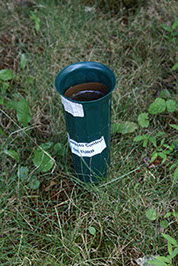 I began my entomological career as a college undergraduate, where I conducted surveillance for West Nile virus and Eastern Equine encephalitis virus in Rhode Island. After obtaining both a bachelor's and master's degree from URI, I moved to New Jersey to obtain my PHD in entomology at Rutgers University. I had the privilege to learn mosquito biology and control from Wayne Crans, who is exceptionally knowledgeable about mosquitoes. Through Dr. Crans, I learned to field identify mosquitoes to species, by observing both their behavior and anatomical characteristics. While obtaining my PHD, I continued to conduct surveillance for WNV and EEE. My PHD and postdoctoral research involved a great deal of mosquito biology and control, including research on Culex territans and Aedes albopictus. Although my research over the years has involved broad research components from the lab to the field, including work in molecular biology and phylogeny, I consider myself a mosquito biologist more than anything else. I continue to advise students and researchers interested in mosquito projects. Louisiana offers a wonderful opportunity to conduct research in mosquito biology, surveillance, and/or control, due to the diverse mosquito fauna, exceptional mosquito control programs in the state, and collaborative partners at LSU AgCenter, LSU Veterinary School, the Louisiana Office of Public Health, Louisiana Mosquito Control Association, and the Louisiana Department of Agriculture and Forestry.
I began my entomological career as a college undergraduate, where I conducted surveillance for West Nile virus and Eastern Equine encephalitis virus in Rhode Island. After obtaining both a bachelor's and master's degree from URI, I moved to New Jersey to obtain my PHD in entomology at Rutgers University. I had the privilege to learn mosquito biology and control from Wayne Crans, who is exceptionally knowledgeable about mosquitoes. Through Dr. Crans, I learned to field identify mosquitoes to species, by observing both their behavior and anatomical characteristics. While obtaining my PHD, I continued to conduct surveillance for WNV and EEE. My PHD and postdoctoral research involved a great deal of mosquito biology and control, including research on Culex territans and Aedes albopictus. Although my research over the years has involved broad research components from the lab to the field, including work in molecular biology and phylogeny, I consider myself a mosquito biologist more than anything else. I continue to advise students and researchers interested in mosquito projects. Louisiana offers a wonderful opportunity to conduct research in mosquito biology, surveillance, and/or control, due to the diverse mosquito fauna, exceptional mosquito control programs in the state, and collaborative partners at LSU AgCenter, LSU Veterinary School, the Louisiana Office of Public Health, Louisiana Mosquito Control Association, and the Louisiana Department of Agriculture and Forestry.
Boothe, E., K. Calliouet, C. Palmisano, V. Tayler, R. Vaeth, T. Walker, D. Wallette, C. Colona, H. Jones, S. Harrington, S. Willis, and K. Healy. Trapping efficiency for host seeking Culex quinquefasciatus in Louisiana. Journal of the American Mosquito Control Association. (In prep)
Crepeau T, S. P. Healy, K. Bartlett-Healy, I. Unlu, A. Farajollahi and D. Fonseca. 2013. Effects of Biogents sentinel trap field placement on capture rates of Asian tiger mosquito, Aedes albopictus. PLoS ONE 8:3 e60524.
Bartlett-Healy, K., W. Crans, and R. Gaugler. 2009. Vertebrate hosts and phylogenetic relationships of amphibian trypanosomes isolated from a potential invertebrate vector, Culex territans Walker (Diptera: Culicidae). Journal of Parasitology. 95 (2): 381-387.
Bartlett-Healy, K., W. Crans, R. Gaugler. 2008. Phonotaxis of Culex territans toward amphibian vocalizations. Annals of the Entomological Society of America. 101 (1): 95-103.
Bartlett-Healy, K., W. Crans, R. Gaugler. 2008. Spatial and temporal synchrony of Culex territans to amphibians. Journal of Medical Entomology. 45 (6): 1031-1038.
